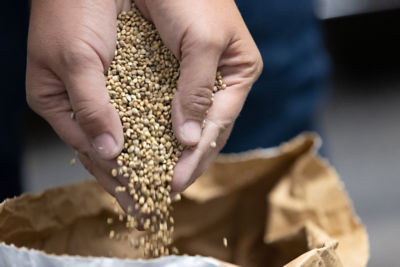Causal Agent
Monosporascus cannonballus
Distribution
Worldwide
Symptoms
Initial symptoms include stunting and poor growth of plants. However, this may go undetected if an entire field is uniformly affected. The older crown leaves begin to turn chlorotic, wilt and collapse within weeks of harvest. Within five to ten days of the first foliar symptoms, most of the canopy may be killed. Tan to reddish-brown lesions form on the roots. Root infection leads to a loss of feeder roots. Eventually the root system may become necrotic, resulting in plant death. Large, black perithecia form on dead roots and are often visible. Fruit of diseased plants are smaller or cracked and may abscise from the pedicle before ripening and have reduced sugar content. Fruit may also become sunburned due to lack of foliage. Stem lesions are generally lacking and above ground symptoms may be confused with other vine declines.
 Perithecia on melon roots. (Courtesy of Gerald Holmes)
Perithecia on melon roots. (Courtesy of Gerald Holmes)
Conditions for Development
Infection by Monosporascus cannonballus is believed to occur early in the season; however, tissue colonization is encouraged as the soil temperature increases. This rise in the soil temperature encourages perithecia formation in the roots. Ascospores are the long-term survival structures of the fungus. Disease spread is by movement of infested soil or infected plant material.
Control
Management of Monosporascus cannonballus has proven to be difficult due to its heat tolerance and thick-walled resting structures. Avoid planting melons and watermelons in known infested fields. Also, avoid excessive irrigation, which may only delay plants collapse. Allowing infested roots to dry out in the field followed by fumigating soon after harvest has shown to be beneficial. The use of rootstocks has been beneficial in watermelon, although additional work is needed for melon. Chemigation through drip irrigation lines has also been shown to be effective.




